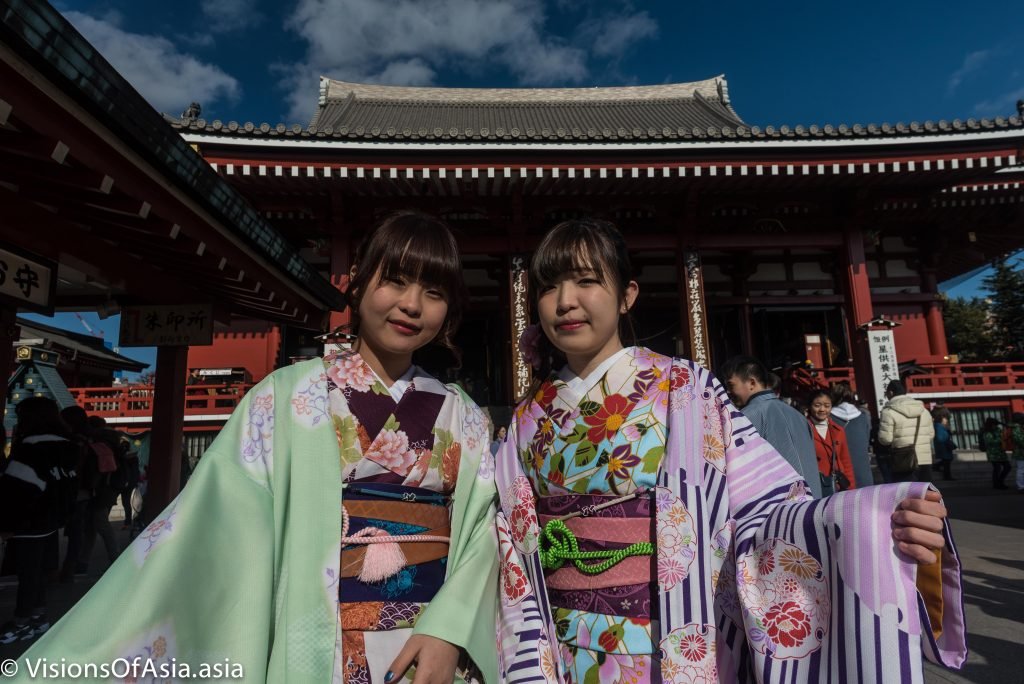Asakusa, its market and the Senso-ji shrine are all important parts of any visit to Tokyo. But more than elsewhere, there is a special vibe, the Asakusa vibe which is present in that area and makes so lovable, despite the huge number of tourists.
The senso-ji market
The first thing tourists encounter when exiting the metro at the final station of Asakusa is the Nakamise shopping street. The second next thing is a lot of ladies and gentlemen in kimonos, but you should be aware that most of them are Asian tourists.
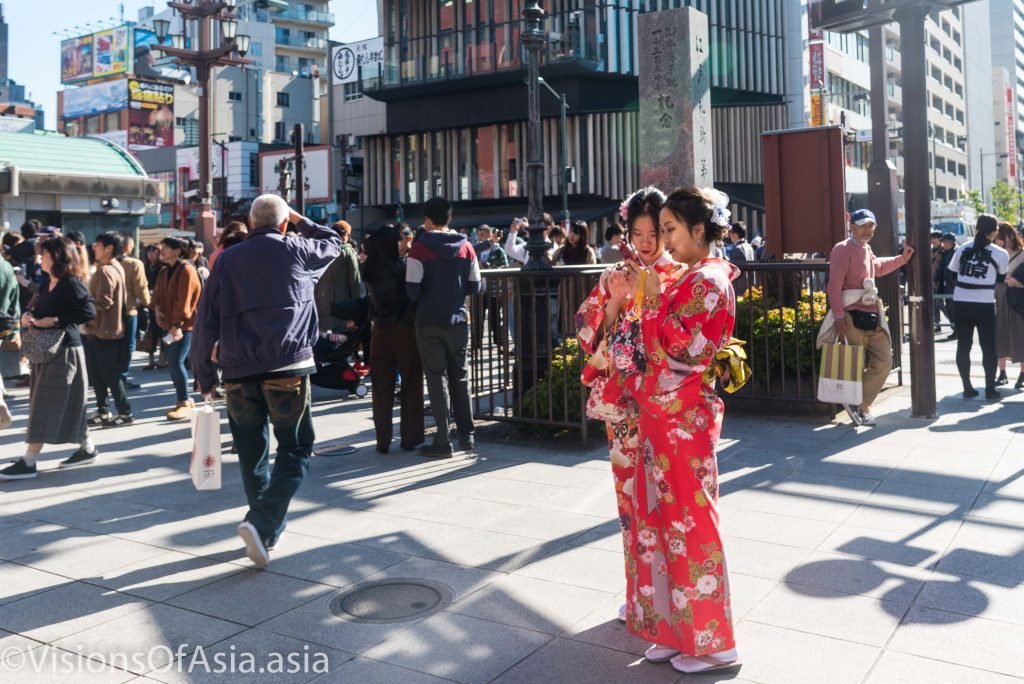
The main attraction of Asakusa market is probably the sweets and souvenirs (mostly made in China, but check the shop in a back alley selling knives). As a souvenir, you can get a samurai sword to open your letters!
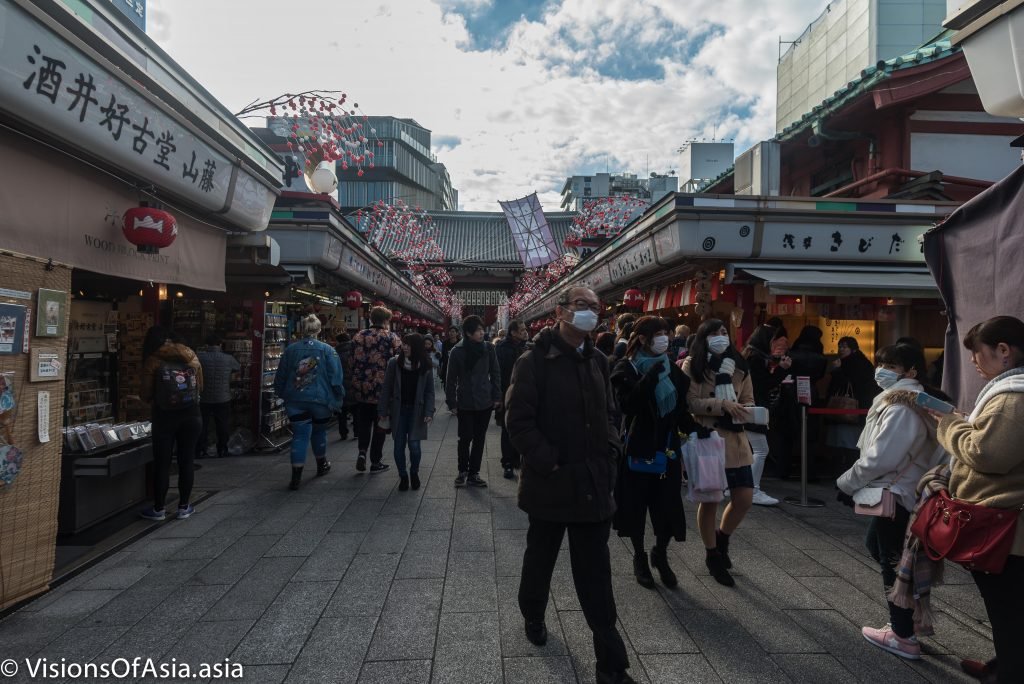
Senso-ji the focal point of Asakusa
A previous post did talk about Senso-ji and the importance it had for Tokyo inhabitants as the oldest shrine of the city. To translate this in Western terms, you would have to imagine that Senso-ji occupies about the same affective and emotional space in the heart of Tokyoites as Notre Dame does for the Parisians.

It is also beloved by tourists, mainly because of that “Asakusa vibe”, where for a couple hours, you can imagine being a Japanese coming to this shrine (and mostly taking selfies).
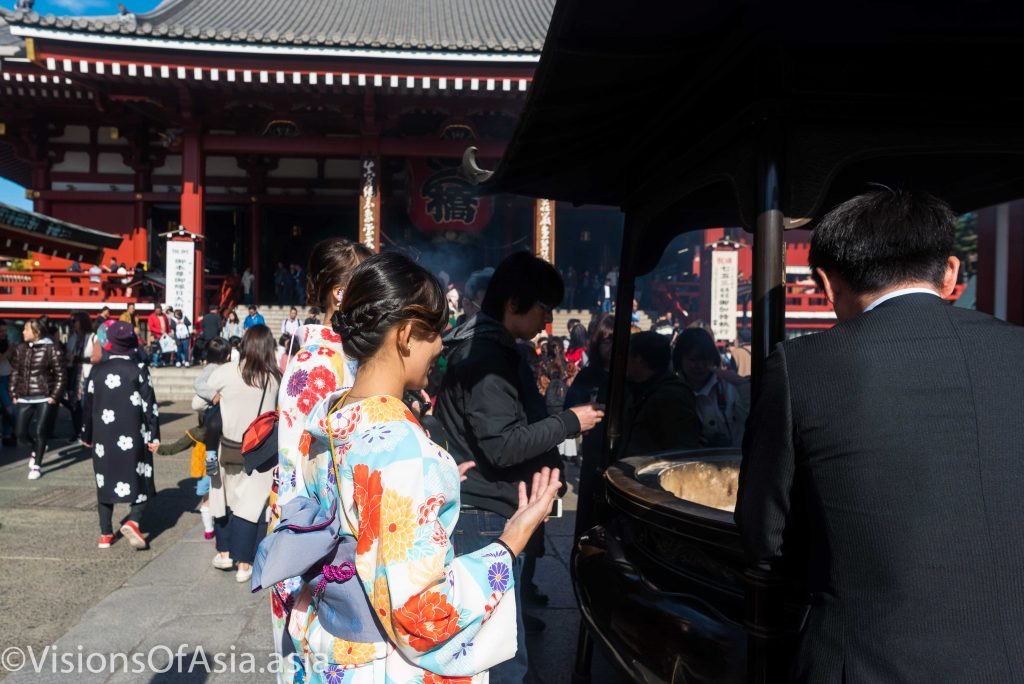
For Japanese, themselves, Senso-Ji is the place to go for praying for success, for thanksgiving and for a variety of other reasons. Something very interesting in Japanese shrines is the relative dearth of statues. Japanese pray to spirits (kami), and hence have no real need to see a statue, unlike, for example Chinese.
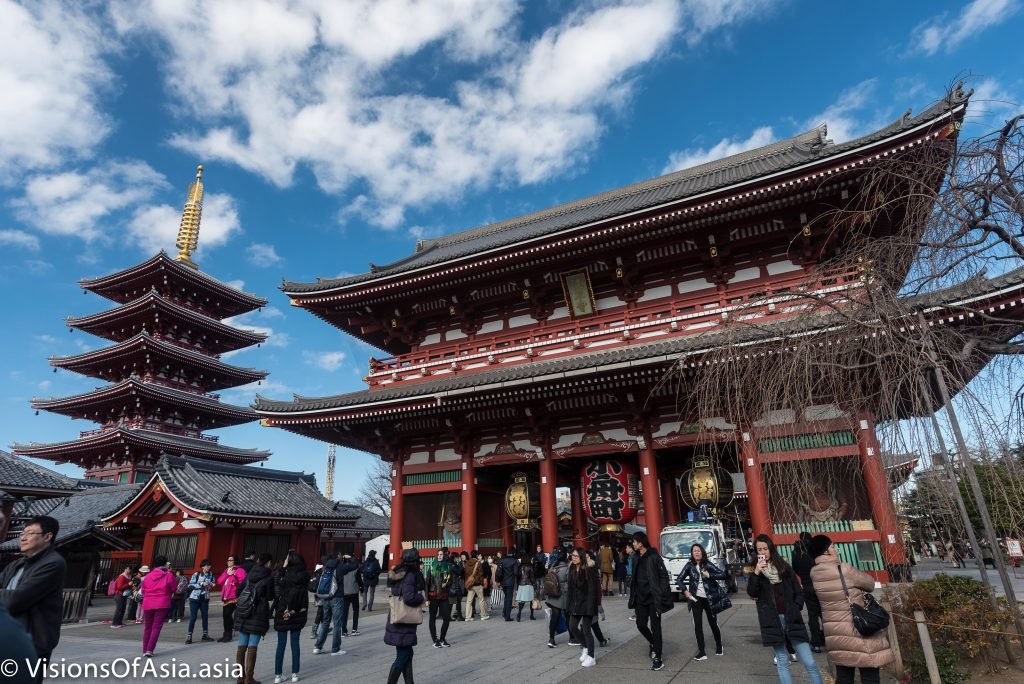
Touristy occupations
Besides visiting Senso-ji, the Asakusa area is filled with shops offering to rent kimonos to tourists. Beyond dressing as Japanese, many tourists love to experience the feeling of being pulled in a hand-drawn rickshaw.
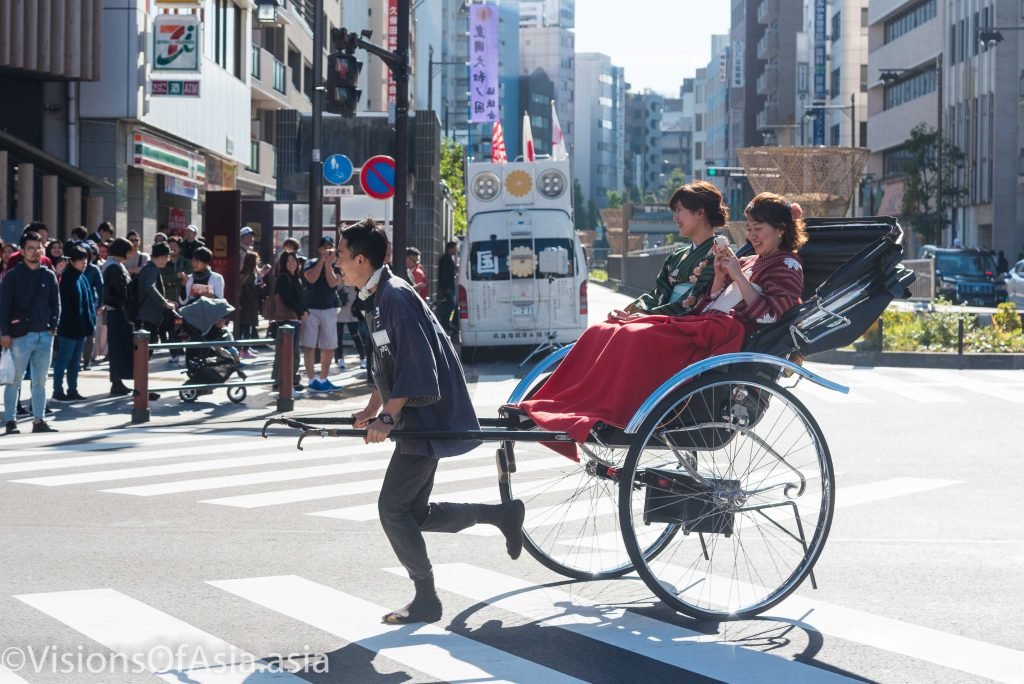
And then, of course, there is the shopping for souvenirs. I found some cute designs in a shop selling bags made out of the fabric used for kimonos.
Japanese use a lot bicycles to move around for short distances, and it was the occasion for me of doing some panning shots in the low razing winter light.

A lady biking caught in a panning shot. 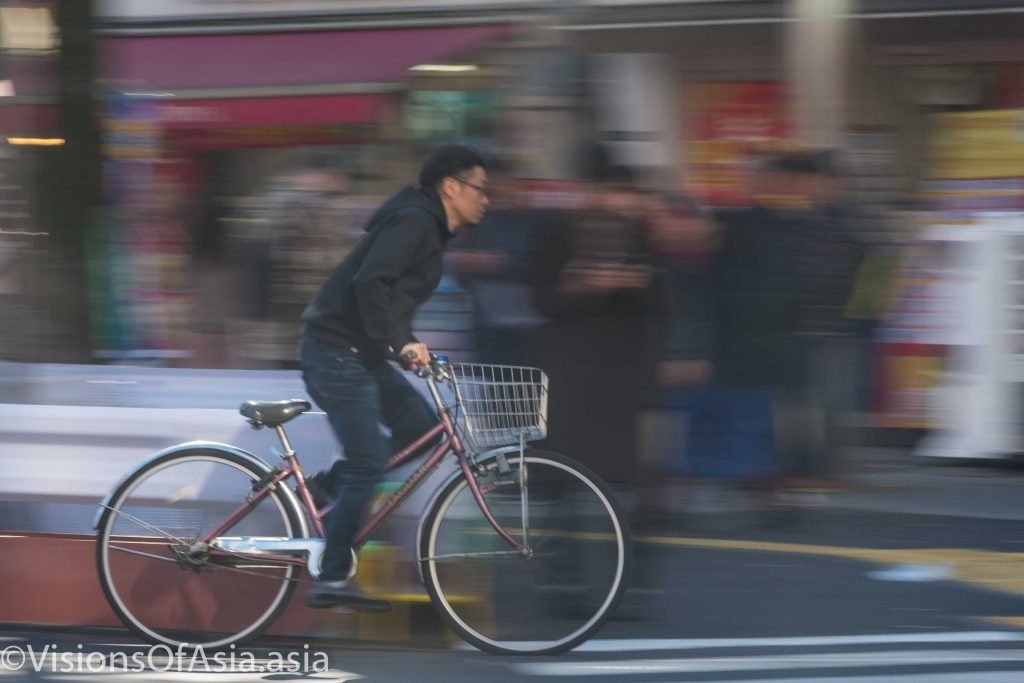
A man biking through Asakusa, caught with a panning shot. 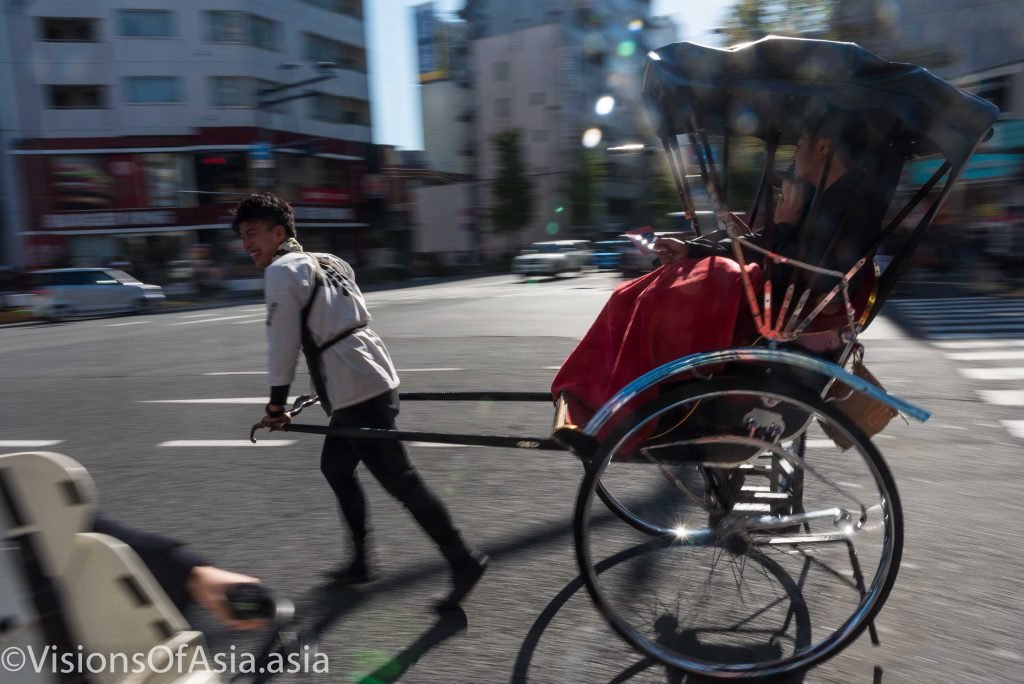
A richshaw panning shot
Dance show
I was lucky as near Senso-ji, a folkloric group performed a traditional dance, one of those danced during the summer “matsuri” (the festivals).
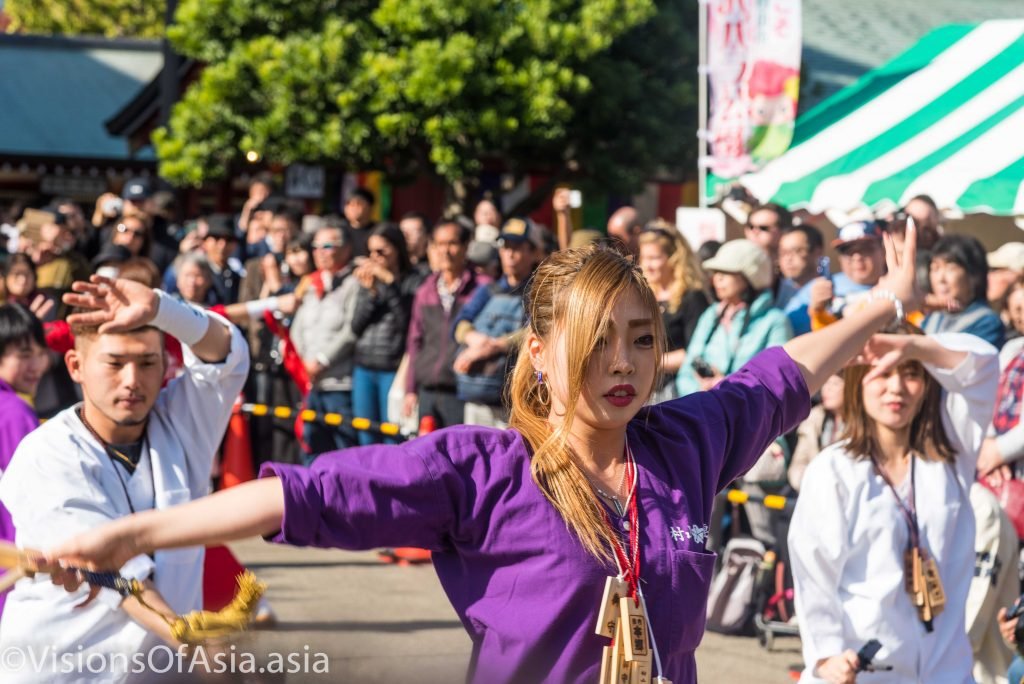
A lot of the tourists grouped around to watch the performance, Chinese tourists, of course, taking the lion’s share (a heavy and much present group all over my trips in Japan).
The show was great if short, but I believe that watching an actual matsuri in summer really allows you to experience the beauty of these ancestral traditions.
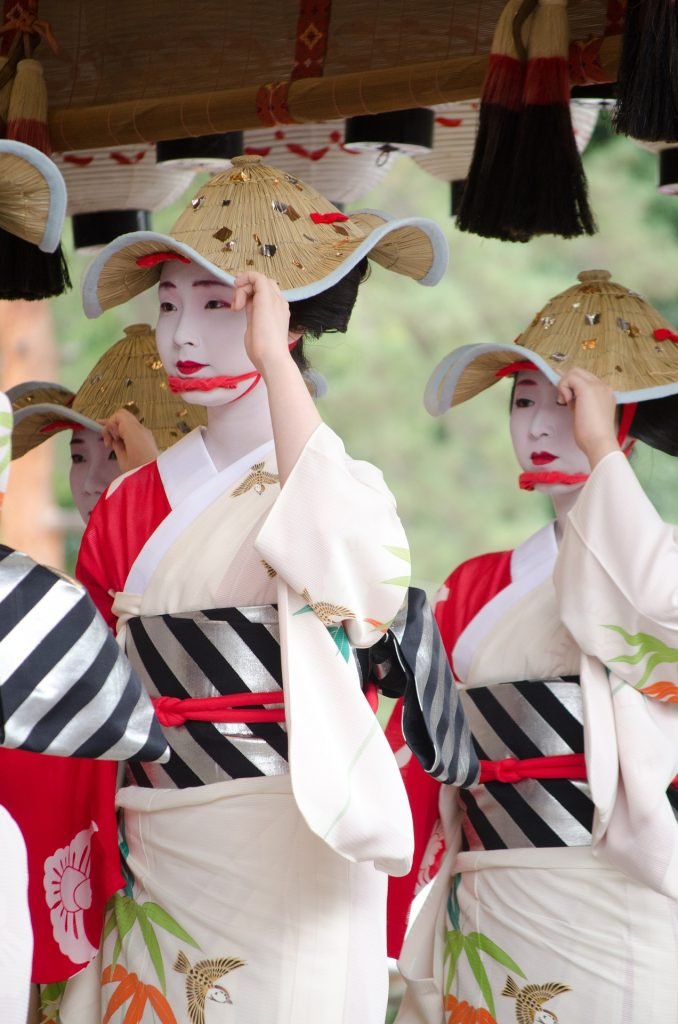
Japanese folklore is every bit as complex and as refined as the society and it is a pleasure to watch it.
Asakusa: the place to be!
Even if the more trendy aspects of Tokyo appeal to you, make sure however that you give Asakusa a try. Despite the heavy touristic presence, you can still see traces of the original Japan there.
Be respectful and polite however, as this is a place of worship, and you should respect the beliefs of the Japanese. Japanese, if you are polite and kind, generally will understand and be very glad if you ask them if you can take a picture of them.
